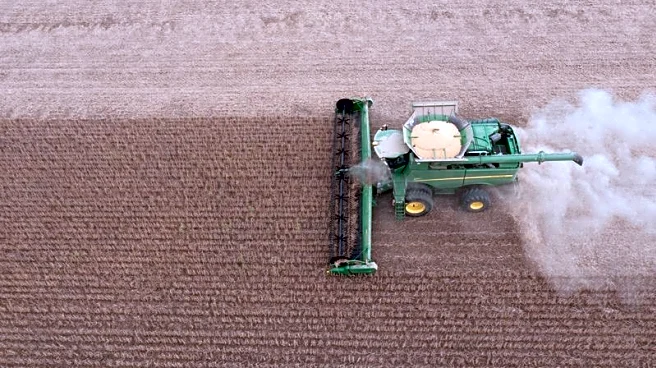Rapid Read • 8 min read
The Feed Leaders Committee (FLC) of South Korea has announced an international tender to purchase between 52,000 and 69,900 metric tons of animal feed corn. The deadline for submitting price offers is set for August 13, with the shipment expected to arrive in South Korea by December 20. The tender specifies different shipping windows depending on the origin of the corn, including the U.S. Pacific Northwest Coast, the U.S. Gulf Coast, South America, and South Africa. This development follows a record low in Chicago corn futures, which has spurred interest from Asian buyers. The U.S. Department of Agriculture has reported a record corn harvest this year, attributed to increased acreage and favorable weather conditions.
AD
The tender from South Korea's FLC highlights the global demand for U.S. agricultural products, particularly corn, which is a staple in animal feed. The record harvest in the U.S. presents an opportunity for American farmers to capitalize on international markets, potentially boosting the agricultural sector's revenue. This demand could also influence corn prices and futures, impacting stakeholders in the agricultural and trading industries. The tender's timing, amid low corn futures, suggests strategic purchasing by Asian buyers, which could stabilize or increase corn prices, benefiting U.S. exporters.
As the tender deadline approaches, U.S. exporters are likely to prepare competitive offers to secure contracts with South Korea. The outcome of this tender could set a precedent for future international agricultural trade, especially if the U.S. continues to experience favorable harvest conditions. Additionally, the response from other Asian countries could lead to increased demand for U.S. corn, further influencing market dynamics.
The tender reflects broader trends in global agricultural trade, where countries are increasingly looking to secure food supplies amid fluctuating market conditions. This could lead to more strategic partnerships and agreements between the U.S. and Asian countries, potentially affecting trade policies and agricultural practices.
AD
More Stories You Might Enjoy













